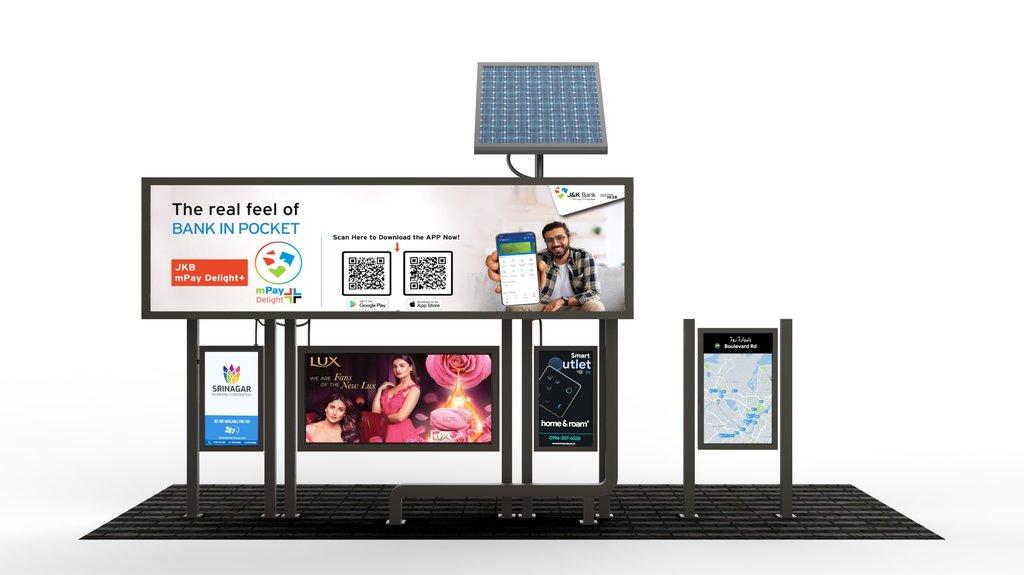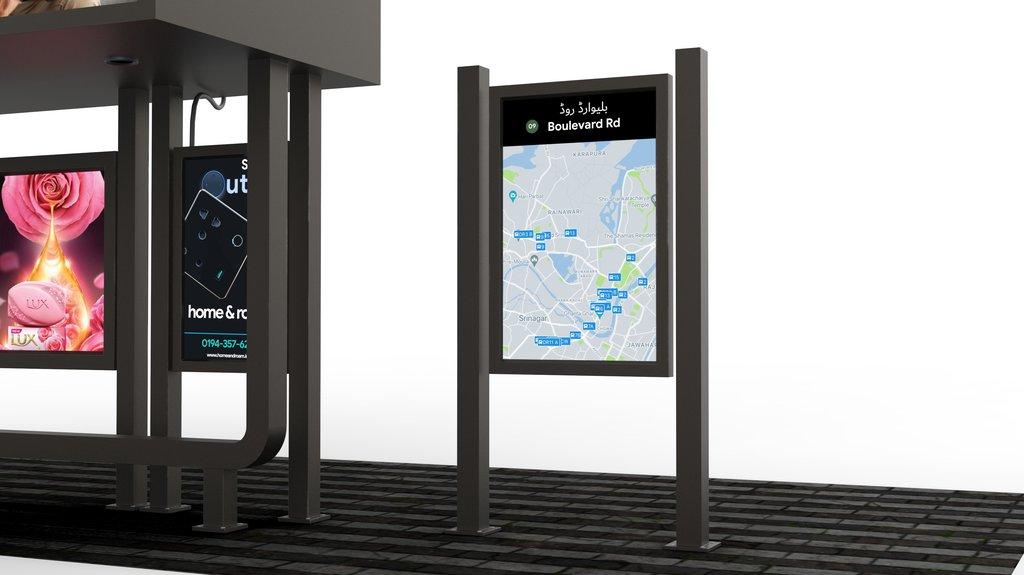What Are Smart Bus Shelters?
As urban populations continue to grow, the need for efficient and user-friendly public transport systems becomes increasingly vital.
Smart Bus Shelters
Smart bus shelters are modernized bus stops equipped with advanced technology to provide real-time information and improve the overall passenger experience. Unlike traditional bus shelters, which primarily offer basic shelter from the elements, smart bus shelters integrate various features that enhance connectivity and convenience.

Key Features of Smart Bus Shelters
- Real-Time Information Displays: One of the most significant advantages of smart bus shelters is their ability to provide real-time updates on bus arrival times. Digital screens display live data, helping commuters plan their journeys more effectively.
- Wi-Fi Connectivity: Many smart bus shelters offer free Wi-Fi access, allowing passengers to stay connected while waiting for their bus. This feature is particularly beneficial for students and professionals on the go.
- Charging Stations: Equipped with USB charging ports, smart bus shelters allow commuters to charge their devices, ensuring they remain connected even on longer waits.
- Environmental Monitoring: Some smart shelters come with sensors that monitor air quality, temperature, and noise levels. This data can be used by city officials to address environmental concerns and improve urban living conditions.
- Smart Lighting: LED lighting not only enhances visibility but can also adjust brightness based on the time of day or occupancy, contributing to energy savings.
- CCTV and Security Features: Enhanced safety is a priority in smart bus shelters. Many are equipped with surveillance cameras and emergency call buttons, providing peace of mind for commuters, especially during late hours.
- Interactive Displays: Some smart shelters feature touch screens that offer information about local attractions, transit routes, and even community events, enhancing the overall commuter experience.

Benefits of Smart Bus Shelters
- Enhanced Commuter Experience: With real-time updates, connectivity, and added amenities, smart bus shelters significantly improve the waiting experience, making public transport more appealing.
- Increased Public Transport Usage: By providing a more comfortable and informative environment, smart bus shelters encourage more people to use public transport, potentially reducing traffic congestion and emissions.
- Data-Driven Urban Planning: The data collected from smart shelters can inform city planners about peak usage times, commuter behavior, and environmental conditions, leading to better-informed decisions for future infrastructure projects.
- Community Engagement: By integrating information about local events and services, smart bus shelters can help strengthen community ties and promote local businesses.
- Sustainability: Many smart bus shelters are designed with sustainability in mind, using eco-friendly materials and energy-efficient technologies, contributing to greener urban spaces.
Challenges and Considerations
While the benefits of smart bus shelters are numerous, there are challenges to consider:
- Cost: The initial investment for implementing smart shelters can be significant. Cities need to evaluate these costs against long-term benefits and potential savings.
- Maintenance: Ensuring that smart shelters remain functional and well-maintained is crucial. Regular updates and repairs are necessary to keep technology running smoothly.
- Privacy Concerns: With the inclusion of surveillance and data collection, privacy issues must be addressed. Clear policies and regulations should be established to protect commuter data.
- Digital Divide: While smart bus shelters enhance connectivity, it’s essential to ensure that all community members, including those without smartphones or digital literacy, have access to information and services.
The Future of Smart Bus Shelters in India
In India, where urbanization is rapidly accelerating, the adoption of smart bus shelters is a promising step toward modernizing public transport. Cities like Srinagar, Delhi, Mumbai, and Bangalore are already exploring smart infrastructure to improve commuter experiences. Future developments may include:

- Integration with Mobile Apps: As mobile technology advances, smart bus shelters could be integrated with city transit apps, allowing users to plan their journeys and receive notifications directly on their devices.
- Expansion of Features: Continued innovation may lead to even more features, such as automated ticketing, augmented reality navigation, and enhanced community engagement tools.
- Nationwide Rollout: As success stories emerge, we may see a nationwide rollout of smart bus shelters across various Indian cities, creating a more interconnected and efficient urban transport network.
No comments yet. Login to start a new discussion Start a new discussion